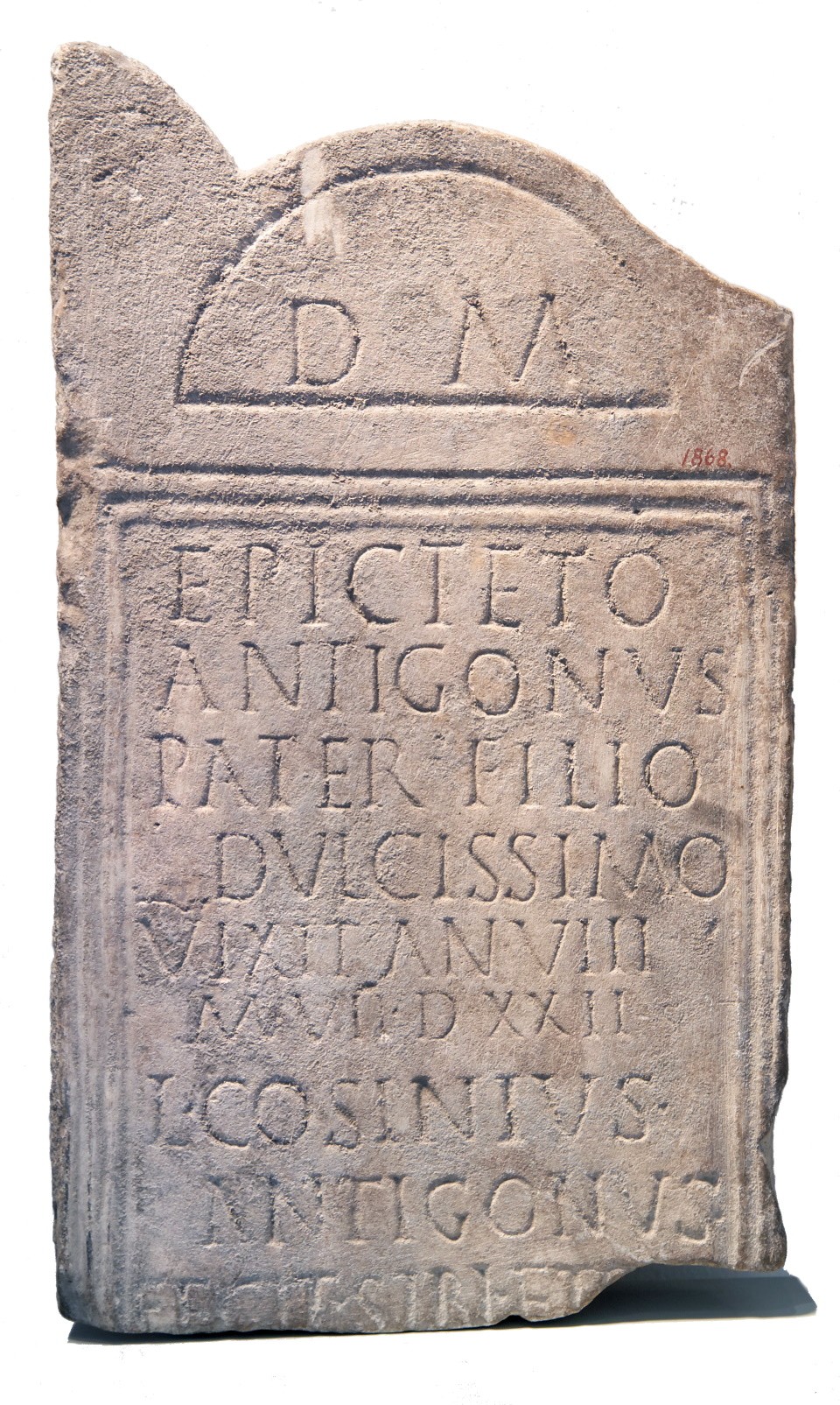Aus religiösen und auch hygienischen Gründen durften innerhalb von Siedlungen und Städten keine Toten bestattet werden. So waren die Ausfallstraßen teilweise von Begräbnisstätten und größeren Grabbauten gesäumt.
Dieser Grabstein stammt nach den Unterlagen August Kestners von solch einem Friedhof, der an der heutigen Via Nomentana vor den Stadttoren Roms lag. Dort befand sich auch in unmittelbarer Nähe der Porta Nomentana das berühmte Haterier-Grabmal, das ab 1827 ausgegraben wurde. (AVS)
Ehem. Sammlung August Kestner, Rom
en








